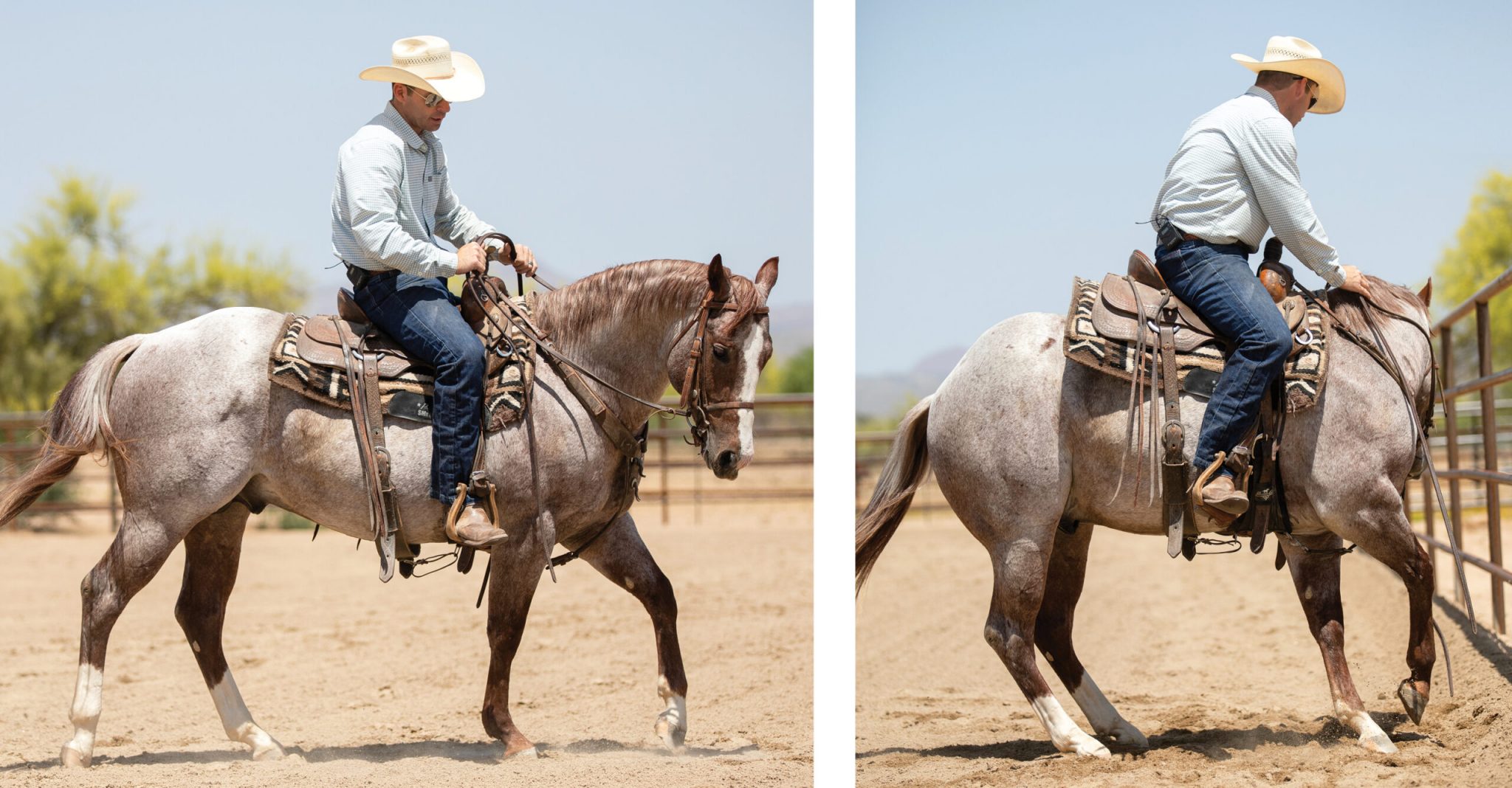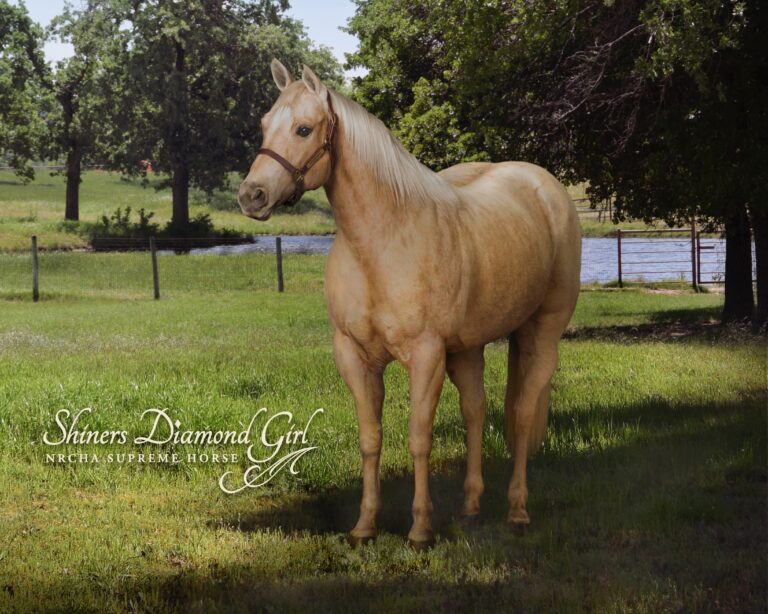When I’m working with a young horse, there are several fundamentals that I like to work on before I ever attempt working a cow. One of those things is making sure that my horse is following his nose and freed up in his shoulder when I ask him to turn. To work on that, I like to incorporate a circle drill into my routine that teaches my horse to listen to my hand, leg, and body cues, while also teaching him to follow his nose and move his feet.
While the focus of this drill is on the turn, it also gives me a chance to check in with my horse to see how he guides in a circle. I can see where he wants to lean on me, and it also gives me a chance to evaluate how soft he’s staying in his body or if he’s bracing.
One
I find a spot in my arena where I can do a circle next to a fence and walk a circle. Before I get to the fence, I check in with my horse to see how he’s responding to my cues. He shouldn’t want to brace against my hands, and he should be moving forward at a steady rhythm with his head just slightly to the inside, as it shows in this photo.

Two
As I approach the fence, I make sure to give myself enough room between it and my horse so that I can safely turn into it. When I feel my horse is straight, I stop riding and ask for the stop. My feet go away from my horse’s sides, my back softens, and then I take my left rein and pull his nose right into the fence. At this point, I should be able to see the corner of my horse’s left eye and he should follow his nose to start the turnaround.
Hand placement is very important here. When I go to my hand, I move it close to my hip—or my front pocket. If my hand gets too far out to the side, he’s going to step wide and not stay underneath himself as well.
Three
If my horse listens to my cues, I close my turn and immediately ask him forward. He should stay framed up in my bridle and stay between my legs as I ask him out of the turn. The purpose of this drill is to help me gain control of my horse’s feet, and teach him how to follow his nose so that when I go to work a cow, I can use my feet and my hands to help support my horse as he needs it.

Four
Once my horse can successfully complete this drill at a walk, I pick up the tempo and ask him to trot on the same size circle. I might do a couple of circles before asking him to stop at the fence again, so that he doesn’t begin to anticipate the maneuver—I want him to be listening to my cue and not just going on autopilot.
Learn More: Counter-Bend Drill
If he’s pushing on my legs or bracing against my hands while I trot around, I’ll take a minute to get him back in frame and moving off my legs before going on to the next step.
Five
Giving myself enough distance between my horse and the fence, I ask for the stop again, releasing my legs and relaxing in my seat. I then go to my right hand to turn my horse into the fence going to the right. He should free up in the shoulders and move his front feet effectively while driving his hock underneath himself to keep him in that athletic position I need him to be in when working a cow.

Six
I feel my horse’s shoulder start to get away from me in the middle of our turn, so instead of asking him to exit the turn like I have been doing, I keep him in the turnaround until he’s following his nose again and his body is in the correct position. I’ll then find my exit point and ask him to trot on my circle.
Learn More: Test Your Steering with This Drill
Seven
After I do this drill for a little while, my horse should become more comfortable with where his body needs to go, and I should no longer need the fence to support him. I will eventually start stopping him at the top side of my circle, away from the fence, to see how he responds to my cue without the fence there to support him.
By now he should be staying soft in his body, and start to understand how to follow his nose and move his feet. But if I find him struggling to stay in position, I might take him back to the fence to continue to soften him up and use the fence as a guide.
Learn More: Horse&Rider OnDemand






